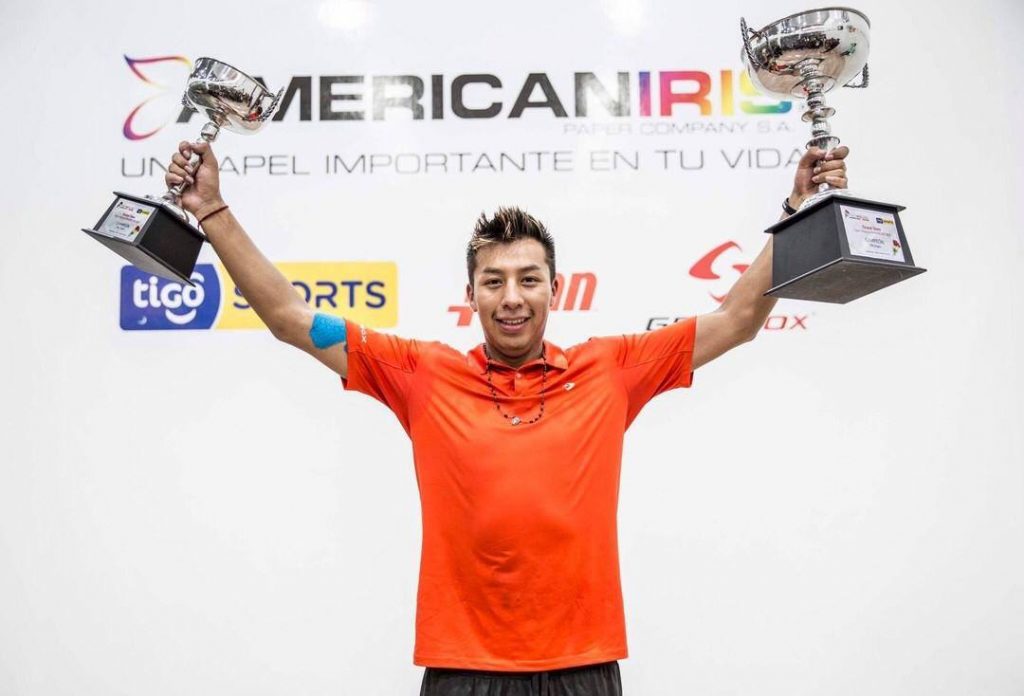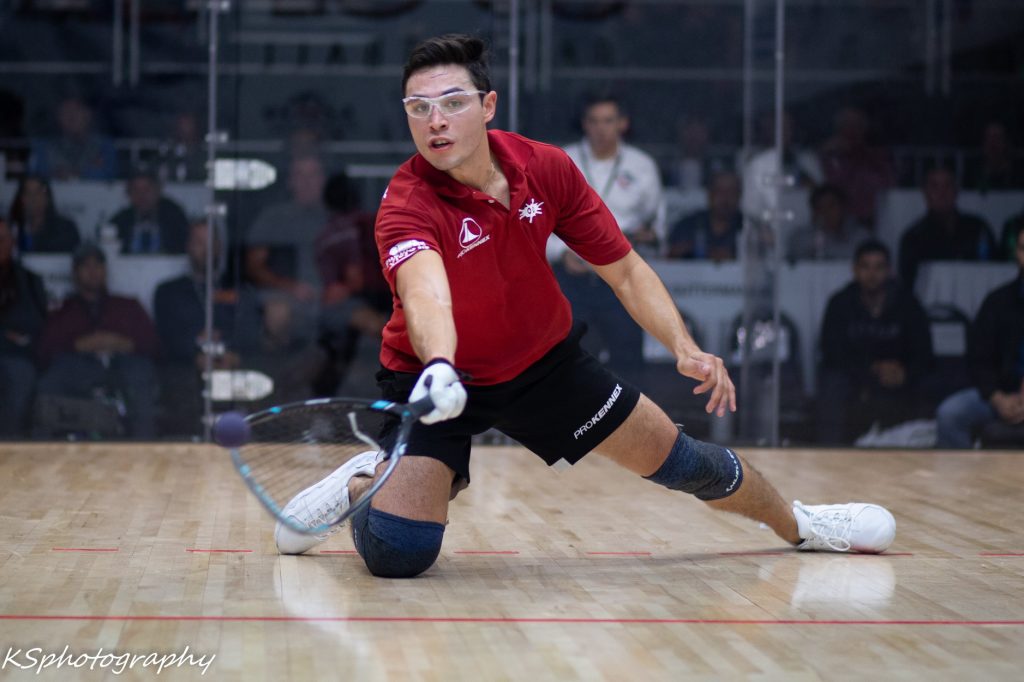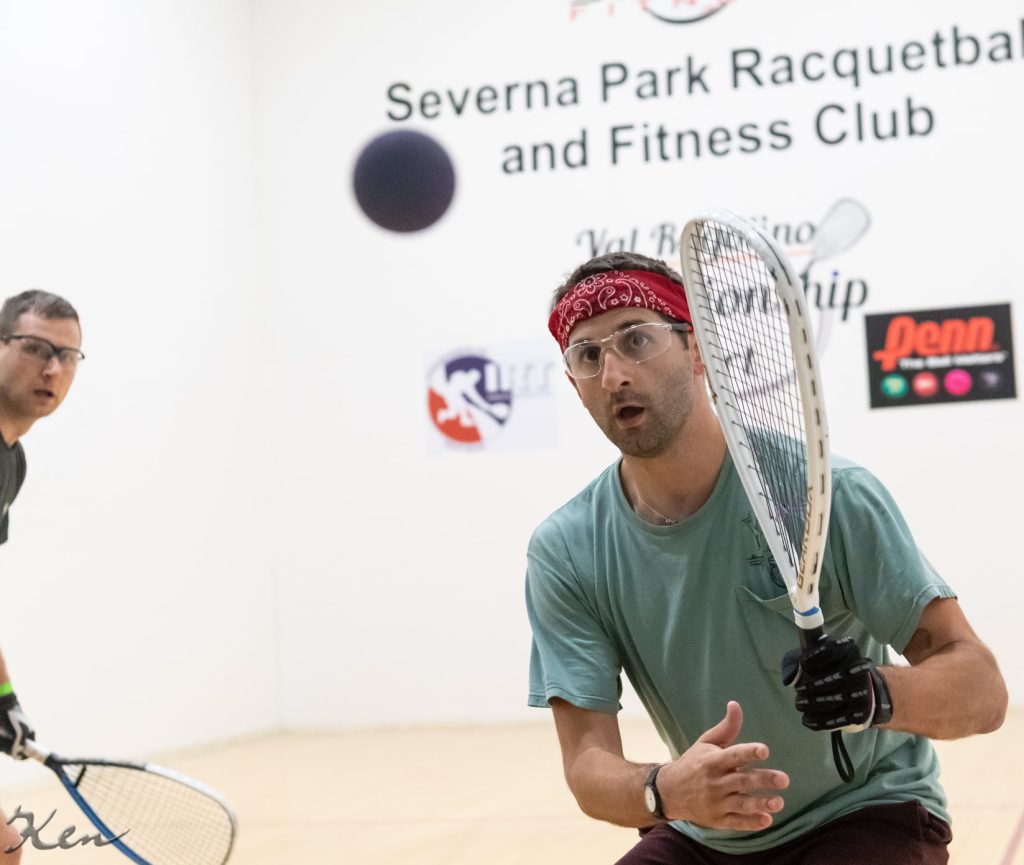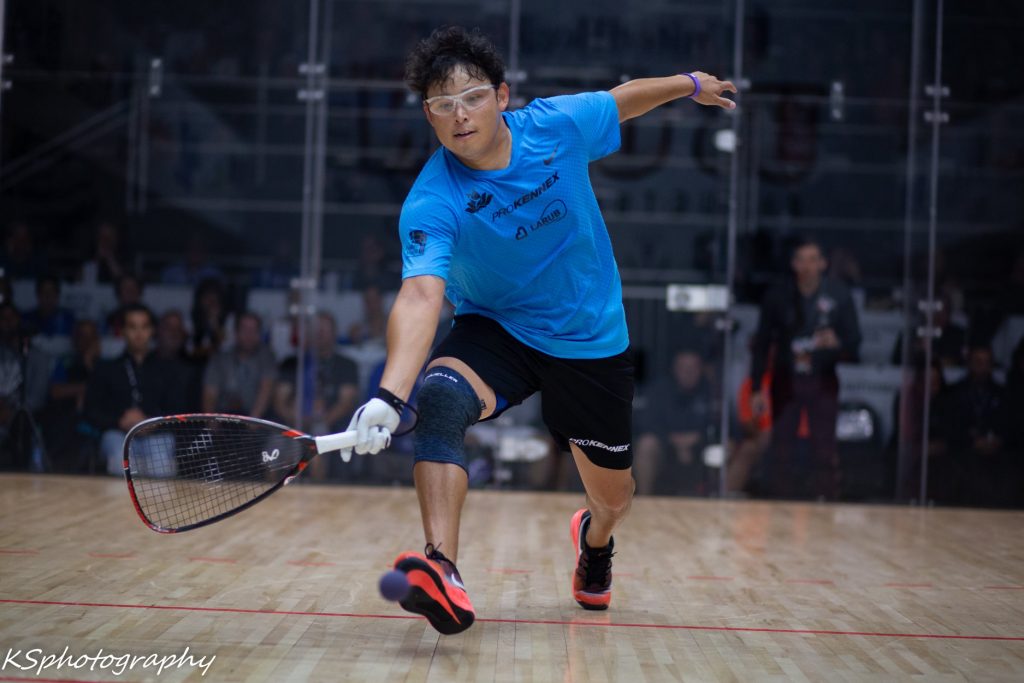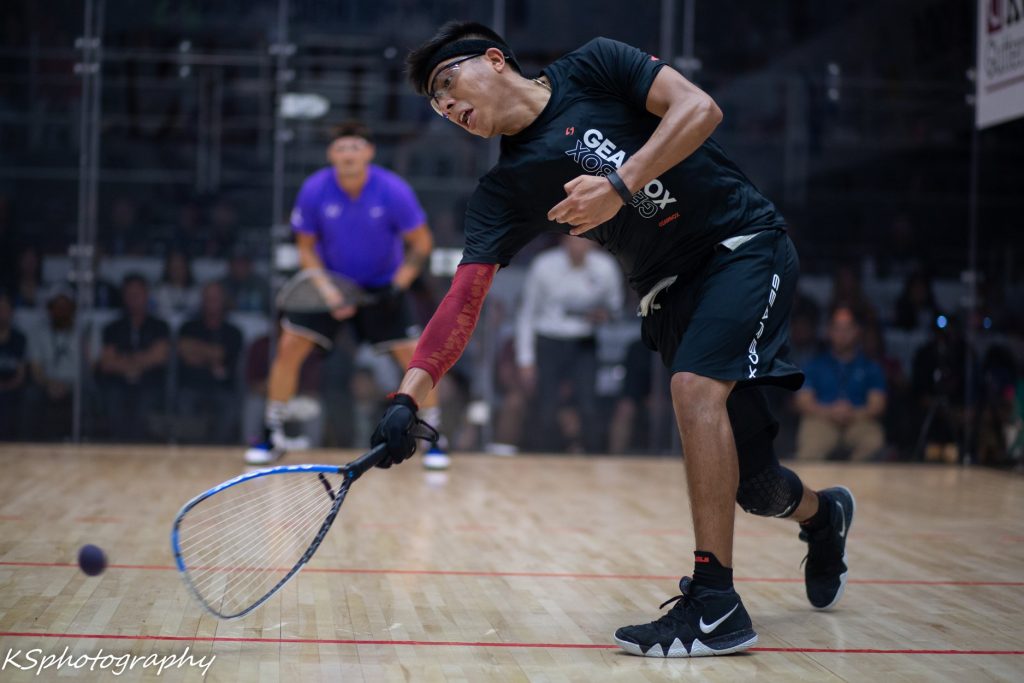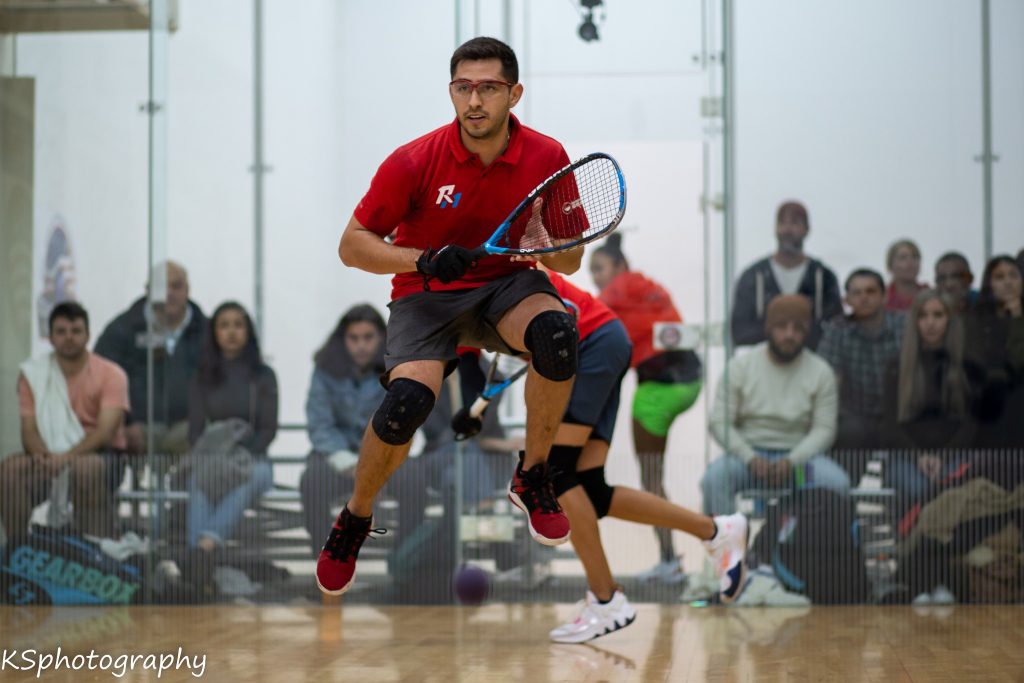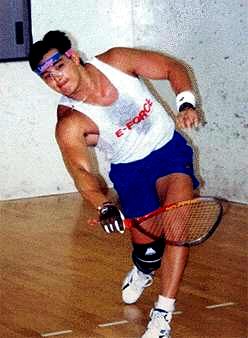
(Editor’s note: I published this piece in January 2023, based on a lot of data I have collected over the past decade. More documentation and more information came to light from crowdsourcing in the wake of this, and I’ve post-publishing corrected/edited some of the text. At some point I’ll just have to rewrite this entirely based on new findings).
A post in KRG came up recently that featured the venerable former pro @Egan Inoue , along with the familiar claim that he owns the title of ‘fastest ever recorded racquetball hit” at 191mph.
Except … the “proof” of that claim is basically word-of-mouth lore that has persisted over the years, without anyone providing a place where said MPH was measured or who actually measured it.
Over the years, as I’ve done thousands of hours of research in our sport, reviewed old magazines for results. As i’ve done this, I’ve kept a collection of MPH claims and competitions, and I figured this was as good of a time as any to put these down in a post for reaction in one place.
I’m going to order these claims in order of “highest MPH claimed” down to lowest, and for each claim I’ll list the source and the validity.
—–
210mph Backhand by Sudsy Monchik :
- Source of claim: hyperbole in a Head advertisement.
- likelihood of truth: doutbful.
- Notes: Sudsy has some verified readings further down, which are 25% lower than a 210mph backhand claim. He had a great backhand, no doubt. 210? no.
200mph serve by Scott Reiff at a pro stop in Atlanta in the early 1990s.
- Source of claim: unknown
- likelihood of truth: doubtful.
- Notes: Reiff is known as a power hitter from back in the day, but is not really in the same class as the other players listed here.
Cliff Swain in the 191-192 range on his serve
- Source of claim: internet lore and a direct quote from Cliff
- Likelihood of truth: possible
- Notes: I asked Cliff directly and his quote is as follows: “Todd Boss, I saw 192 immediately after hitting a ball at the gun. I don’t believe 100% in the reliability of these guns either. Also it was at my home club so there’s another asterisk but there were many witnesses at this IRT event. “
Egan Inoue: 191mph
- Source of claim: this is oft-repeated claim of fastest ever recorded speed is essentially internet lore
- Likelihood of truth: doubtful
- Notes: Even though this is the number that most people repeat, I have my doubts. We all just saw the link to the Inoue-Doyle 1990 final, where the two players were playing with probably 20″ racquets and, well, anyone who’s seen modern racquetball could see that their serves were nowhere near as fast as what we see today.
Brian Baker; 190 mph
- Source of claim: Baker himself in a discussion in 2013 on the old 40×20 forum.
- Likelihood of truth: pretty likely, based on conversations.
- Notes: Baker was pinged on the 40×20 2013 discussion and chimed in with what seemed like credible details. I talked with him personally in Sept 2024 to get some more details: He was at a pro stop in San Jose on a gun and was measured at 190. He also played with Fredenberg a lot in the Dallas area and both believe that Baker is a tick ahead of Fredenberg.
- A copy of the discussion is here. Still isn’t really “proof” in as much as we have eyewitnesses or an official event, but this is more believable than the records above it to me right now.
- https://web.archive.org/…/is-racquetball-really-the…/
Brian Fredenberg: 186 at 2001 US Open
- Source of Claim: newspaper reporting from the event
- Reliability: pretty reliable
- Notes: See below for more verified claims about Fredenberg.
- Here’s a video of Fredenberg playing; https://www.youtube.com/watch?v=Fpib1MNlFyA
180mph: Egan Inoue
- Source: internet group
- Reliability: low.
- Notes: An author in a thread claims to have “seen” a gun register 180 but no higher. Not from Egan himself so a non 1st party claim.
- https://groups.google.com/…/c/qwXzO_5PU6I/m/4NKd5EqLAwAJ
Sudsy Monchik: forehand “more than 180mph”
- Source: SI article 1999, per 5/31/99 Sports Illustrated article
- https://www.si.com/…/man-wielding-a-dangerous-weapon…
- Reliability: weak (despite being claimed in SI, there’s not a source given)
- Notes: the way the article is written, it seems like this is more lore than fact.
Cliff Swain: Head Racquetball advertisement claims his serve in the 180+ range:
- Source: https://groups.google.com/forum/…
- Reliability: Likely, if Swain himself saw higher readings.
- Notes: lots of “i heard he hit…” with the guys from the mid 1990s, which is weird because it’s not like radar guns didn’t exist at that time.
John Ellis: 183mph
- Source: claim made on FB post Jan 2023
- Quote Ellis himself: “I saw a speed gun clock on my serve in Houston in about 1993 or 1994 that read 183mph. However, there’s no proof that it happened and I don’t know if I believe the speed gun anyway. But they did show me the speed gun right after the serve, and back then I hit the absolute shit out of the ball!”
- Reliability: based on Ellis’ play and the other speeds, here, highly likely.
Jeff Conine: 182 at an exhibition in Missouri?
- Source: a direct claim made here: https://groups.google.com/forum/…
- Reliability: weak
- Notes: this is significantly higher than a verified, published reading noted further below. seems unreliable.
2003 US Open Speed gun: Fredenberg at 181
- Brian Fredeberg: 181
- Brent Walters 178
- Mitch Williams 175
- Kane Waselenchuk 175
Source: Brent Walters, who participated in the contest at the 2003 US Open.
Egan Inoue: during exhibition 170-175 range, 179 in Houston at Nationals in late 1980s
- Source: unknown
- Reliability: we’re closer to what I think is reasonable for Inoue.
Fredenberg: 171 at the 2002 US Open
- Source: 2002 US Open had a gun on players for $1000 (Eddie Meredith running it). Each got 5 hits and here’s how it went:
- Fredenberg 171
- Walters 170
- Mitch 168
- Kane 164
- Reliability: solid
- Notes: These numbers seem light, especially based on the same group of players hitting in 2003. This is from a published competition run by a trusted source. Fredenberg came in on top, followed by two known big-hitters in Walters and Mitch. Kane a tick below, which, if you’ve seen both Mitch and Kane on the court at the same time isn’t out of the realm of possible.
Jeff Conine: serve once clocked at 162mph
- Source: Racquetball magazine feature Sept/Oct 1993
- Reliability: solid
- Notes: this seems more in line with what he could do, as opposed to claims of 180+ made above.
Mitch Williams: 160-162 at Arlington regionals event
- Source: personally verified by me, Todd Boss. As in, I was holding the radar gun.; hardest ever seen on a radar gun. I measured him myself. (I hit it 133 in the same competition as a point of comparison, a decent figure for a low-open player, but well below the 140-range we generally see pros hit today at a minimum, or the 150 range we generally see harder hitters.
- Reliability: 100%
- Notes: Mitch was by far and away the crispest, hardest hitter on the east coast during the 2000s. I measured plenty of other hard hitters who were in the low 150s and he was a clear step ahead.
Spalding Power-Serve contest
source: Nov/Dec 1995 Racquetball magazine
1. Sudsy Monchik: 164mph
2. John Ellis: 161mph
3. Tim Doyle: 157mph
4. Andy Roberts: 156mph
5. Cliff Swain: 153mph
6. Luis Vogel: 145mph
6. Woody Clouse: 145mph
8. Tony Jelso: 142mph
Notes: perhaps the best source of comparison for players in the mid 1990s. This was a verified sponsored competition with published results in Racquetball Magazine. 22″ racquets were available by 1995 (the current 22″ max length rule was adopted officially by USAR in 1996 and remains the rule today).
Reliability: Seems pretty accurate … but why are these figures 20mph lower than the top figures that the likes of Sudsy and Ellis have above?
——-
Conclusions?
So, we seem to have plenty of evidence of mid 180s from a handful of guys from the mid 1990s.
I have two main issues here:
- Why are the verified published results from the Spalding study in 1995 20mph lower than the top figures for these players?
- I just have to ask: where are the modern players? All these 180 readings are from 25 years ago. Athletes and equipment only progresses … why why havn’t we seen someone who can broach these figures in the modern game? Why aren’t we seeing the power hitters of today (Montoya, Moscoso, Jake, Garay, etc) with these kinds of figures? That’s the only thing about all these stories I have a hard time with.


